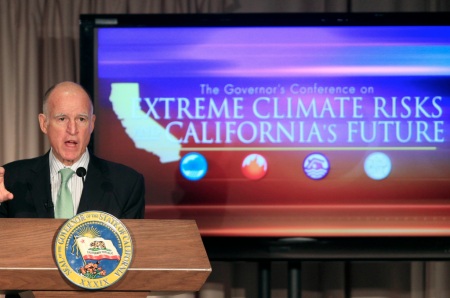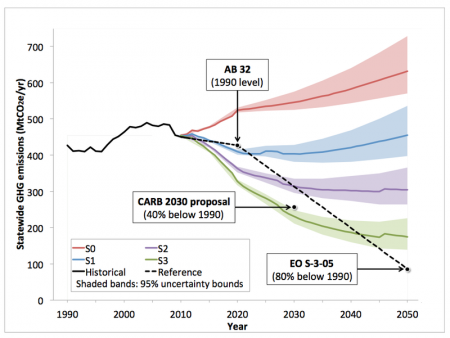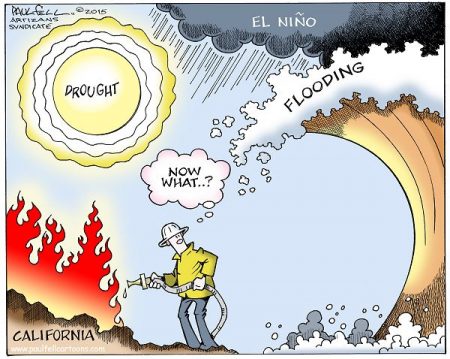September 9, 2016 – Yesterday California enacted new legislation to dramatically reduce its carbon footprint. The legislation, SB 32, sets greenhouse gas emission reduction targets 40% below 1990 levels by 2030. It replaces earlier legislation, AB 32 which set greenhouse gas emission target reductions to 1990 levels by 2020. The previous legislation provided no guidance on how California was to get there. The new legislation combined with a second bill, AB 197, creates the mechanism for the transition to a low carbon future to happen.

California today has 38 million people, that’s larger than the entire population of Canada. Its gross domestic product of $2.5 trillion makes it the 6th largest economy in the world. In 2030 California is expected to have 44 million residents and GDP estimates equal $3.5 trillion. Yet the state intends to see its current carbon footprint decrease dramatically. How is that even possible?
Two strategies are the drivers to make this a reality. The first comes from policy and the second from innovation.
Policy requires every industry sector to be given specific reduction targets. Whether reducing methane emissions from agriculture, or creating conditions for more Californians to switch from fossil-fuel burning vehicles to electric and hybrid alternatives, the government has set itself on a path to micro manage the transition to a lower carbon future. As one California legislator stated, “It’s no longer the low-hanging fruit…we’re going to have to attack it more vigorously.”
Today California uses a carrot-and-stick cap and trade system to reduce carbon emissions in industry. But cap and trade, a market driven mechanism for dealing with greenhouse gases may raise lots of money for the government to invest in policy aimed at greener outcomes, but it operates at a relatively slow pace and is constantly besieged by legal confrontations from industry players.
The main regulator in California is CARB (the California Air Resources Board). CARB under previous legislation and targeted reductions lacked sufficient authority to manage the transition beyond 2020. But now with AB 197 passed it is working hand-in-hand with the California legislature to direct and implement the policy enabling emission reductions. For the first time a jurisdiction has enacted laws that enforce drastic emission reductions.
In the line graph appearing below we can see the CARB 2030 target of 40% below 1990 emissions as well as the trending based on current history. California based on its present policy knows it will not be easy to meet its planned targets.

It means a lot more investment in clean energy (solar, wind, tidal and wave, and storage), retrofitting of homes and industry to meet new energy efficiency standards, a dramatic overhaul of the transportation sector moving from fossil-fuel powered to an all electric vehicle solution, and significant changes to agricultural practices that address high carbon emitting practices (livestock and tillage). It means greater investment in mass transit in and between cities, turning buildings into clean energy power sources and building micro grids and distributed power infrastructure, implementing carbon capture and sequestration (CCS) projects in-situ at large carbon-burning industrial sites while also developing CCS clusters to capture emissions from communities of polluters. It means capturing emissions from landfill and greater investment in reforestation to increase the sequestration capacity of natural carbon sinks.
What will be the cost to Californians? CARB answers this question by outlining the risk to California of not doing what is needed:
- $2.5 trillion in real estate assets at risk from extreme weather, sea level rise, and wildfires at an annual cost of $300 million to $3.9 billion over the century.
- $10s of billions in direct losses to the California economy annually from rising temperatures impacting water, energy, transportation, tourism, recreation, agriculture and public health, and billions more annually in indirect costs.
- water supply costs due to growing scarcity amounting to $689 million annually and indirect impacts of up to $3 billion annually by 2050.
- wildfire risk and losses estimated at $2 billion annually by 2050 and up to $14 billion per year by the end of the century.

In yesterday’s edition of the Los Angeles Times, Governor Jerry Brown is quoted as stating that Californians will experience the “coercive power of government” in ensuring the state meets its objectives. “Whatever it’s going to take, it’s going to take battle, it’s going to take wisdom and it will take some balance that we don’t overdo it,” the governor stated. One thing is for sure, it will require taxpayers to make the needed investment.
Of course we know that climate change and global warming know no boundaries. So what California is doing has to be seen as a model for the rest of the world. All nations that currently contribute significant greenhouse gas emissions must learn from and try to replicate what California is doing. Anything less will be an abrogation of this generation’s responsibility in leaving a world almost as habitable as today for those that follow.
















Interesting Low Carbon Policy at the state level in California.